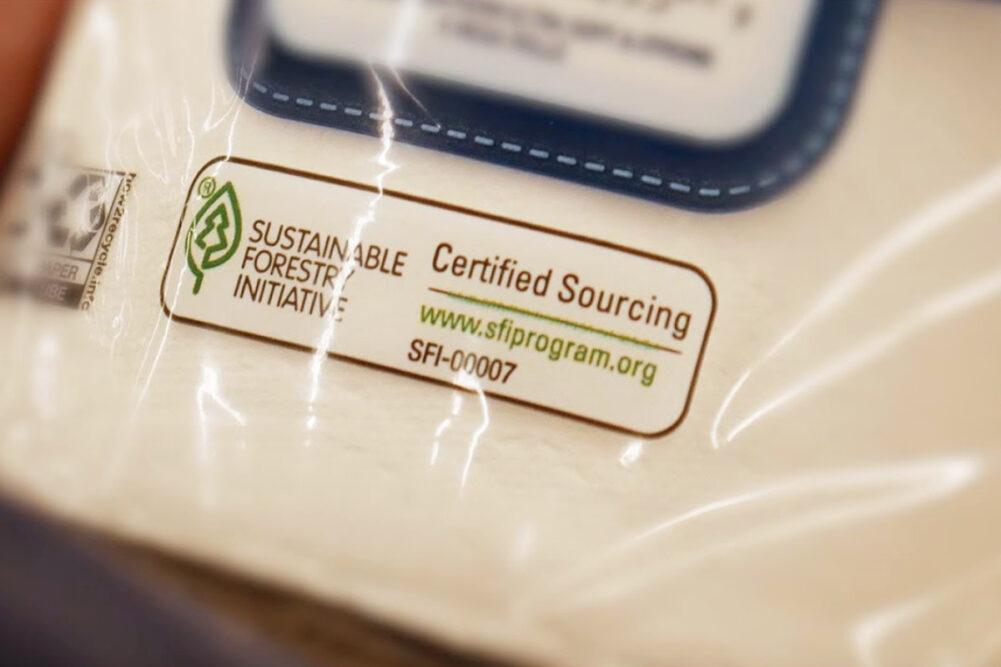CHICAGO — Products carrying a sustainability claim have continued growing during the COVID-19 pandemic, capturing a 17% market share during the first half of 2020, according to research from IRI and the NYU Stern Center for Sustainable Business.
Sustainability-marketed products saw a 56% increase in dollar sales during the week ended March 15, when CPG sales peaked due to pantry stocking.
More than half of consumers said they are buying more or as much organic products as they did prior to COVID-19, and 7 in 10 said they are buying more or as much eco-friendly products.
“Consumers recognize that they can influence brands to ‘do the right thing,’ and in these days of COVID-19, Black Lives Matter and climate change, doing the right thing has never been more important,” said Tensie Whelan, founding director and professor at the NYU Stern Center for Sustainable Business. “Purchasing of sustainable products is a trend with staying power.”
 The research builds on last year’s Sustainable Market Share Index report, which found products carrying a sustainability claim captured 16% of the market across all CPG categories last year, up from 14% in 2015.
The research builds on last year’s Sustainable Market Share Index report, which found products carrying a sustainability claim captured 16% of the market across all CPG categories last year, up from 14% in 2015.
“This shows that sustainability-marketed products are growing, but what was really stunning is that 16% delivered 55% of market growth between 2015 and 2019,” Ms. Whelan said.
The report tracked sales growth in more than a dozen food and beverage categories, including milk, yogurt, energy drinks, chocolate candy, coffee, salty snacks, crackers, bottled juices, natural cheese, cereal, frozen dinner entrees and fresh bread. In each case, the growth of products with a sustainability claim outpaced growth in the overall category.
Sustainability-marketed carbonated beverages saw the most growth, with sales increasing more than 130% between 2015 and 2019, while the overall category grew 10%. Sales of cookies and soups with a sustainability claim also increased more than 100% during the period, while the overall categories grew 15% and 10%, respectively.
Food and beverages also had the greatest price leverage, with consumers demonstrating less price sensitivity for products like dinner entrees, cereal, yogurt, beverages and snacks than personal and household products.
“We have to recognize the power of sustainability, not just in the market share but in the contribution to growth,” said Larry Levin, executive vice president of market and shopper insights at IRI.
Consumer sentiment
Consumers see sustainability as multifaceted, encompassing both environmental and social factors.
Issues consumers listed as most important include minimizing negative environmental impact, commitment to renewable energy, reducing waste, minimizing exploitation of natural resources, minimizing carbon footprint, coming together as a community for the greater good, working in ways that benefit society at large, reducing climate change, protecting human rights and reducing poverty.
“Coming together for the good of the community and organizations working for the benefit of society, those numbers have grown significantly in a year,” Mr. Levin said. “I think it’s a real feather in the hats of the US population that also is viewed to be a part of the sustainability culture.”
Sustainability attributes vary by category, said Randi Kronthal-Sacco, senior scholar, marketing and corporate outreach, at the NYU Stern Center for Sustainable Business.
“Across the board, however, the most commonly found claim was ‘organic’ followed by ‘non-GMO,’” she said. “Third-party certifications of sustainability are increasingly prevalent, outpacing those without third-party certification for their sustainability claims.”

New claims and dynamics also are emerging.
“There are claims that I did not see two years ago or a year ago around carbon labeling,” Ms. Whelan said. “Another new claim we’re seeing is sustainable farming.”
Younger consumers and those with higher incomes and education levels were most likely to make sustainability a priority.
“There are definitely generational views of what consumers expect from sustainable products,” Mr. Levin said. “Millennials place much greater importance and priority around being socially responsible, buying organic, humanely raised animals, anti-biotic free and energy efficient. The younger you are, the more important this becomes.”
Gen Z and millennial’s definition of sustainability is notable for its inclusion of human rights and social issues, he added.
“Forty-five percent of the population fits into those two buckets,” Mr. Levin said. “They’re going to be our shopping population largely for the next 40 to 50 years, so understanding what makes them tick is critical.”





